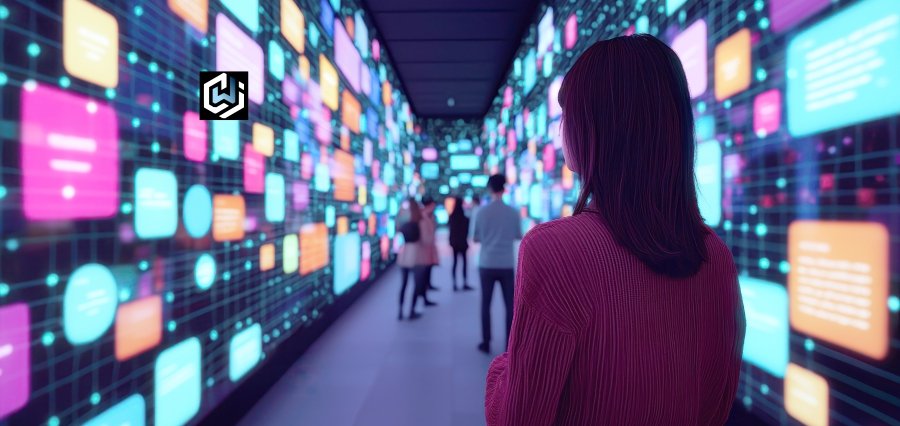Smart Education
The education sector has been through groundbreaking developments over the past decades with a kick-start lent by global shifts in policy, technology, and society. With smart classrooms and e-learning systems replacing chalk-and-talk, the education sector opened up to innovation more and more. The foundation stone upon which all these developments have risen is the continually growing development of educational technology (EdTech), which has significantly shaped the way learning and teaching processes are conducted. In today’s rapidly evolving world, where information is readily available and computer literacy is a requirement for most professions, the integration of EdTech into education systems has been unavoidable as well as imminent.
One of the most notable trends in education today is the growing emphasis on learner-centered practices. Historically, the education systems have tended to be based on a dogmatic, standardized course of study with minimal support for learning style or personal development. Current paradigms in education focus on student engagement, critical thinking, and experiential learning. EdTech has been at the forefront of shifting the dynamics of how education functions. With adaptive software, student-centered classroom settings, and evidence-based examination, students are now in a position to have access to customized material that responds to their own learning requirements and interests. Such technologies track students’ performance in real time, allow instantaneous feedback, and enable reflective adjustments by the instructors and students.
Besides that, online content production has also transformed the nature of school materials. Static textbooks slowly give way to interactive electronic books, video lectures, simulations, and game-based learning platforms. These resources not only support a variety of learning styles—visual, auditory, kinesthetic, and reading/writing—but also keep the students more awake. Khan Academy, Byju’s, and Duolingo are all illustrations of how good multimedia and interactive content can be leveraged to reinforce learning and engage students. EdTech has, in this manner, enhanced the availability of knowledge with high-quality education material made accessible to the whole world at no or minimal cost.
Greater availability of education is the second profound transformation, and it has been led by EdTech innovation. Earlier, quality education was accessible primarily in cities and affluent suburbs. Today, with the expansion of internet access and mobile phones, learning has become accessible in remote and disadvantaged regions. Virtual learning systems, MOOCs, and virtual classroom have reached millions of students to education and resources that were not accessible to them earlier. Through this democratization of education, geographical distances as well as socio-economic distances in learning can be now bridged.
EdTech has also changed the role of a teacher and life in the classroom. Although some saw technology as a potential replacement for teachers, it has been regarded as an augmentative tool for today that enhances pedagogical efficiency. Teachers are increasingly adopting blended learning plans that integrate old-fashioned face-to-face teaching and the utilization of digital content and web-based procedures. Not only is the blended strategy more flexible and interactive in learning, but it also develops more collaboration and independence among students. Furthermore, EdTech software for digital classroom management and assessment has made administrative work simpler so that instructors can devote more time to pedagogy and student engagement.
The impact of EdTech could be most evidently seen throughout the COVID-19 pandemic, which saw remote learning solutions take over every school and institution in the world overnight. Amidst unprecedented disruption, EdTech companies quickly increased their offerings to ensure continuity of learning. Video conferencing tools like Zoom, collaborative tools like Google Classroom, and learning management systems like Moodle and Canvas became leaders to maintain academic functions. The time reflected the potential as well as limitations of e-learning. While the overwhelming majority of teachers and students adapted to the setting, issues of unequal access to devices and internet connectivity illustrated the persistent digital divide waiting to be closed.
Outside of higher education and K-12 classrooms, EdTech has progressed significantly in the context of lifelong learning and upskilling/downskilling. With the evolving job market dynamics due to technological disruption and automation, the time calls for upskilling and reskilling. Online learning portals like Coursera, edX, and Udacity offer industry-specific certifications and courses, enabling individuals to acquire skills at their own convenience. Corporate training modules are now leveraging online portals to deliver bespoke learning experiences to employees in dispersed geographies. It is a reflection of the prevalent understanding that education is no longer a single event in the initial phases of life, but an ongoing process.
The integration of new technologies such as artificial intelligence (AI), machine learning, augmented reality (AR), and virtual reality (VR) is also transforming the shape of learning experiences. AI-powered teaching assistants and bots provide students with round-the-clock learning support, while VR and AR enable reality-simulation interactive classrooms. For example, medical student operations can be simulated through VR, and virtual tours over the course of ancient civilizations can bring history classes to life. All of these are not just enhancing the quality of learning, but also learning engagement and correspondence with the demands of the current times.
There are, however, some very important practical and ethical concerns presented by the use of EdTech on a universal scale. Student mental health, security, and data privacy are concerns that should be handled with a great deal of care. Since education systems handle vast amounts of personal data, there is an urgent need for stringent data protection measures and transparency in using the same. Furthermore, excessive dependence on internet-based education can cause screen fatigue and social alienation, particularly with young pupils. Therefore, there must be a balancing system that has human as well as virtual elements for long-term growth in education.
State assistance and policy structures have a pivotal role to play in realizing maximum advantage from EdTech. Professional development of teachers, curriculum reform, and investments in digital infrastructure are crucial towards developing an ecosystem where technology will thrive. Public-private partnerships can help scale up successful EdTech innovations, especially where provision is low.





